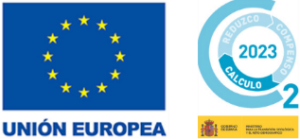An important business company leader in the manufacture of spirits, has expanded its production capacity, within its growth and expansion policy, with the construction of a new production centre in the Andalusian capital. The company has used the services of J. Huesa to cover the water needs derived from its production from the new factory.
This project consists of three different actions, which are detailed below:
Process water treatment plant
Process water treatment plant that influences the final product and whose objective is to obtain water free of salinity and organic contamination for use as a direct ingredient in the manufacture of spirits.
In this case and considering the client’s needs, J. Huesa opted for a reverse osmosis system with a production capacity of 3.5 m3/h and a subsequent disinfection system that we detail below:
The water coming from an accumulation tank is treated with a hypochlorite dosing system to guarantee the non-proliferation of organic matter inside and then goes to a two-layer filtration system with a maximum flow rate of 6 m3/h whose objective is to remove solids.
Once the water has been filtered, a reducing agent will be dosed to eliminate the residual chlorine that water may bring, to protect and extend the life of the membranes and to produce a bacteriostatic effect ( as it reduces the oxygen required for the presence of aerobic bacteria) and adjust the pH to reduce the Langelier index.
After this, an antiscalant-dispersant product is dosed, to prevent calcium and magnesium salts, sulphates and silica, that could produce inlays in the membranes and therefore loss of flow of treated water.
Once the water has passed through this pre-treatment, it passes to the reverse osmosis skid that has been manufactured in AISI-316L stainless steel, according to the project requirements.

The data for the simulations and the design of the plant model that were considered are the following:
Basic data used for simulations and model design were:
| Raw water flow | 5 m³⁄h |
| Permeate water flow | 3,5 m³/h |
| Reject water | 1,17 m³/h |
| Recirculation water | 1,5 m³/h |
| Performance | 75% |
| Total required flow | 35 m³/day |
| Work hours | 10 h/day |
| Permeate water acummulation | 50 m³/day |
In an initial stage, the water goes through a 5-micron safety pre-filter that will retain possible leaks of particles and suspended solids and later passes into the reverse osmosis membranes.
The skid is equipped with two pumps, the high-pressure that guarantee the plant’s working conditions and the low-pressure one for flushing and chemical cleaning of the membranes (CIP). The osmosis membranes are spiral configuration, made of polyamide and mounted on pressure casings made of GRP wound in a 3 + 1 configuration.
Part of the plant’s rejection is reintroduced into reverse osmosis, so that each m3 of contribution is maximized and 75% of the conversion is guaranteed.
The reverse osmosis plant is equipped with instrumentation and control elements (automatic valves, pressure switches, pressure transmitters, conductivity and pH meters…) that are centralized in an electrical panel located on the skid itself. Likewise, the panel includes a programmable logic automaton and a touch screen for the management and configuration of the plant. The Instrumentation and Control team at J. Huesa has designed the control panel so that it can be integrated into the client’s SCADA system.
As it is a process water treatment that influences the final product and is for human consumption, and because hypochlorite can form chlorine by-products that can be harmful, a system to eliminates residual chlorine is needed before the points of service. In this case, the appropriate treatment to eliminate residual chlorine is an activated carbon filter that will be installed in line before the points of consumption.
To do this, a recirculating chlorine dosing and control system has been installed with a flow rate of 12.5 m3/h installed on a stainless steel skid, in which chemical products are dosed to adjust the pH and water chlorine values, and subsequently passes to a filtration system with activated carbon with a raw water flow of 5 m3/h.
Boiler feed water treatment plant

On the other hand, and to guarantee the maximum life of the boiler in our client’s new production centre, a make-up water treatment plant has been installed to guarantee the optimum hardness values.
A duplex softener with a flow rate of 2 m3/h has been installed. Its purpose is toremove thehardness of the water, for the action of a cationic resin contained in the bottles. The installed equipment has a duplexconfiguration, this allows one of the bottles to be regenerated while the other automatically start the production cycle. This configuration let us increase in the availability of the system.
Before the water enters the boiler, 2 boiler chemicals (anticorrosive and sequestering) are dosed in the appropriate dosage for the characteristics of the installation and the feed water.
Fire Protection System
Finally, J. Huesa has designed a water treatment plant that guarantees the absence of organic matter in the firefighting water, through a recirculation and chlorine dosing system. The installation is provided with a centrifugal pump with a working flow of 60 m3/h and a chlorine dosing system assembled in an AISI-304 stainless steel skid with a 200-liter accumulation tank. This plant has been designed to be installed in an enclosed area.








